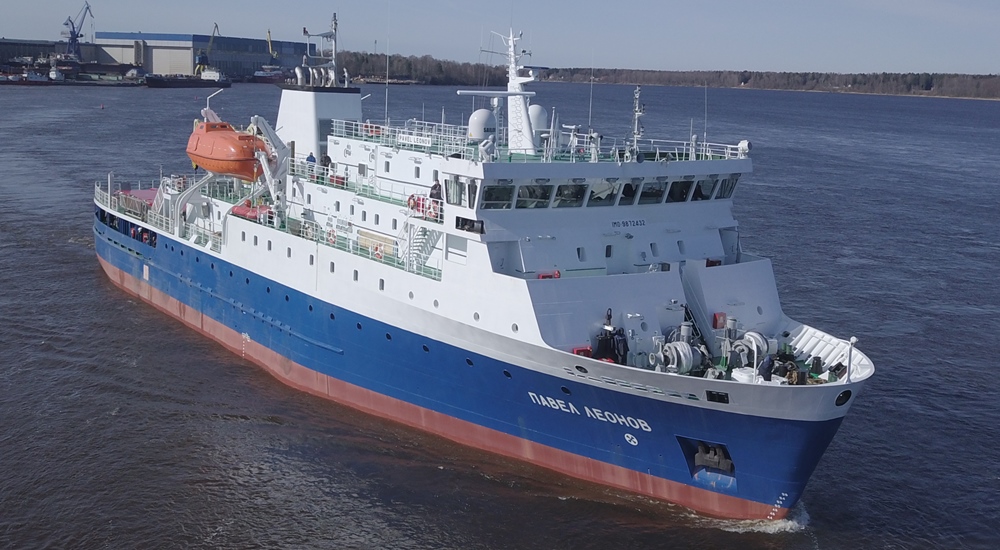JSC Pavel Leonov ferry
JSC Pavel Leonov ferry current position
The current location of JSC Pavel Leonov ferry is in East Asia cruising at speed of 11 kn (20 km/h | 13 mph) en route to Korsakov. The AIS position was last reported 14 minutes ago.
Current PositionSpecifications of JSC Pavel Leonov ferry
| Year of build | 2021 / Age: 4 |
| Flag state | Russia |
| Builder | JSC Sredne-Nevsky Shipyard (Shlisselburg, Russia) |
| Class | ARC4 cargo-passenger icebreaking ferry (Project PV22) |
| Ferry route / homeports | Korsakov Sakhalin-Kuril Islands |
| Building cost | RUB 2,35 billion (USD 37,6M / EUR 33,7M) |
| Engines (power) | Wartsila (3.6 MW / 4828 hp) |
| Speed | 15 kn / 28 km/h / 17 mph |
| Length (LOA) | 75 m / 246 ft |
| Beam (width) | 16 m / 52 ft |
| Gross Tonnage | 3061 gt |
| Passengers | 86 - 146 |
| Crew | 28 |
| Cars | 6 |
| Beds | 173 |
| Decks | 6 |
| Cabins | 38 |
| Decks with cabins | 3 |
| Sister-ships | Admiral Nevelskoy |
| Christened by | Marina Yalymova |
| Owner | JSC United Shipbuilding Corporation |
| Operator | JSC Sakhalinleasingflot/Sakhalin Leasing Fleet |
JSC Pavel Leonov ferry Review
Review of JSC Pavel Leonov ferry
MS Pavel Leonov (корабль Павел Леонов) is a cargo-passenger ferry (грузопассажирское судно) specifically designed for the Sakhalin-Kuril Islands route (crossing time approximately 24 hours). The roundtrip from Korsakov calls at the port towns of Kurilsk (Iturup Island), Yuzhnokurilsk (Kunashir Island), and Malokurilskoye (Shikotan Island).
The vessel (IMO 9872432) is Russian-flagged (MMSI 273210390) and registered in Korsakov (Sakhalin Island).
Under "Project PV22", two units have been built and are operational - Admiral Nevelskoy (Dec 2020) and her sistership Pavel Leonov (May 2021).
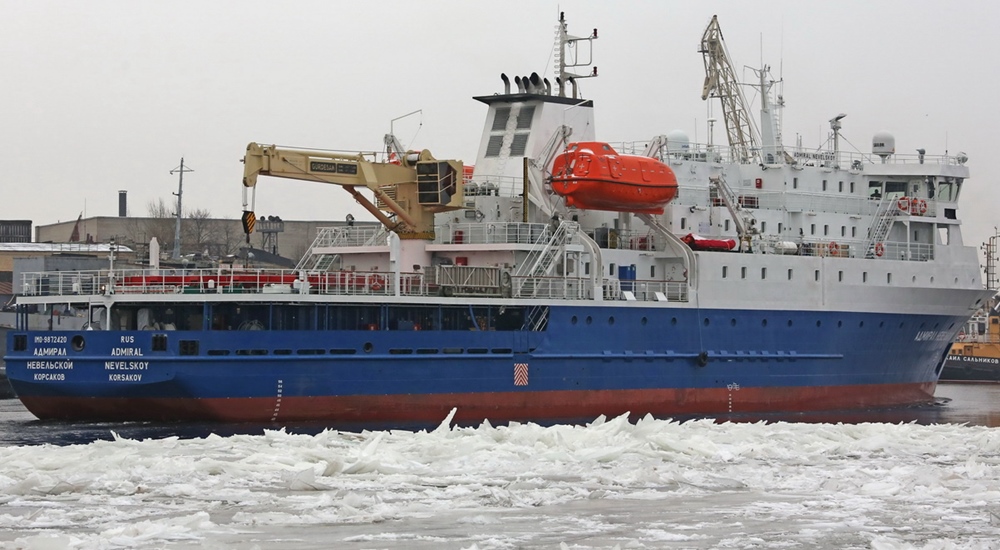
Pavel Leonov (yard/hull number 222) was laid down on April 1, 2019 (keel-laying ceremony), launched (floated out) from drydock on August 6, 2020, and delivered on May 14, 2021. Sea trials were conducted on Lake Ladoga (May 2021).
- The 2021 repositioning voyage from St Petersburg to Korsakov (via the Northern Sea Route) covered ~10,700 km (6,650 mi), arriving in Korsakov on September 16.
- The maiden voyage (from Korsakov) departed on October 1, 2021.
- The ship's godmother was Marina Yalymova (Марина Ялымова), General Director of JSC United Shipbuilding Corporation.
The cruise ship was named for Pavel Petrovich Leonov (Павел Петрович Леонов/1920–2011), a renowned Russian painter of the Soviet period, noted for his “Naive Art.” Collections featuring his works are displayed in museums and galleries in Moscow, Bratislava (Slovakia), Zagreb (Croatia), Stuttgart (Germany/Charlotte Zander Museum), Oxford (England, UK), and The Hague (Netherlands).
Shipbuilder, Shipowner, Project PV22 (history, specs)
The shipowner and operator is JSC Sakhalin Leasing Fleet. In August 2018, JSC Sakhalinleasingflot (Сахалинлизингфлот) and Nevsky Shipyard LLC signed a shipbuilding order for two units. Both ships (Nevelskoy and Leonov) cost the company a total of RUB 4.7 billion (USD 75.2M / EUR 67.5M).
The ship was constructed in Shlisselburg (fka Petrokrepost), a town at the mouth of the Neva River (Lake Ladoga), approximately 35 km (22 mi) east of Sankt-Petersburg. The shipbuilding company JSC Sredne-Nevskiy Shipyard (officially “Middle Neva Shipbuilding Plant” /Средне-Невский судостроительный завод/1912-founded) is a subsidiary of JSC United Shipbuilding Corporation (2017-founded) specializing in shipbuilding, ship repairs, and maintenance.
JSC Sredne-Nevskiy is one of Russia’s largest shipbuilders, specializing in next-generation vessels—including passenger ships and warships for the Russian Navy (missile boats, minesweepers, patrol boats)—constructed from fiberglass, aluminum, and low-magnetic steel. The shipyard can produce vessels with maximum LOA 100 m (328 ft), beam 16 m (52.5 ft), draft/draught 4.5 m (15 ft), and DWT up to 2,700 tons.
Designed by the Russian company Marine Engineering Bureau LLC (МИБ-Дизайн-СПБ), Project PV22 ferries are cargo-passenger ships (ARC4-class icebreaking vessels) with ice-strengthened hulls for safe operations on the Sakhalin–Kuriles route. Project PV22 is an improved version of Project MPSV07. Under Project MPSV07, Nevsky Shipyard produced four icebreaking salvage vessels (Arctic rescuers/class Icebreaker6)—Karev (2012), Kavdeykin (2013), Zaborschikov (2013), and Demidov (2015). Project PV22 was developed under the Russian Government program “Social and Economic Development of the Kuril Islands 2016–2025.”
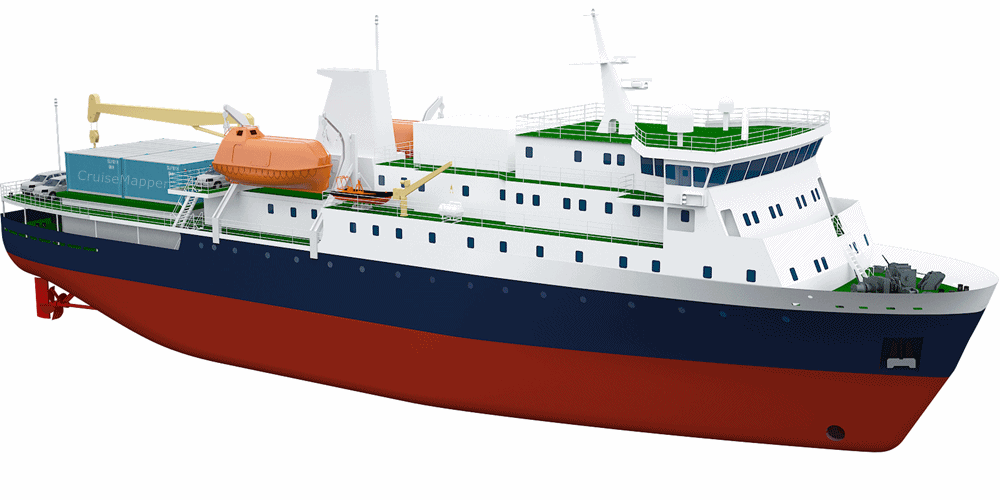
Project PV22 ships can navigate without icebreaker assistance in loose ice with maximum thicknesses of 0.6 m (2 ft/winter–spring seasons) and 0.8 m (2.5 ft/summer–autumn seasons). Her maximum cargo capacities are 895 m3 (stored in an aft cargo hold), 24 TEU containers (including 8 reefers/refrigerated containers), and 6 vehicles (passenger cars). TEUs and cars are stowed outdoors at an aft open-deck storage area. Open and cargo decks are served by one Gurdesan crane (30.5-tonne telescopic boom; 12 m/39 ft reach). She can carry various general cargoes, including refrigerated (perishable goods) and dangerous goods (packaged hazardous materials).
The power plant consists of two 1.8 MW main diesel engines (Wartsila 9L20; total 3.6 MW), plus 3 auxiliary engines (3×332 kW/total 996 kW), 2 diesel generators (Volvo Penta D13; 2×500 kW/total 1 MW), and 1 emergency diesel generator (Volvo Penta D9; 214 kW). The engines run on HFO (heavy fuel oil).
The propulsion system includes one bow tunnel thruster (Schottel, 200 kW), four rudders (2 electro-hydraulic with 100 kNm torque each, plus 2 semi-balanced), and two CPPs (controllable-pitch propellers/aft). Wartsila also provided the gearbox (shaft line) and the Integrated Automation System.
Fuel tanks allow autonomous operation—without bunkering—for at least 15 days and a cruising range of 8,050 km (5,000 mi). Capacities are 82,000 liters of diesel (21,660 US gal), 307,000 liters of HFO (81,100 gal), 220,000 liters of freshwater (58,120 gal), and 165,000 liters of blackwater/sewage (43,590 gal).
Onboard safety equipment includes two rescue boats (6 seats each/by Pella Fjord), two lifeboats (96 seats each/by Jiangyin Neptune Marine Appliance Co Ltd), two liferafts (25 seats each/by PSN Ufa), and a firefighting system (sprinkler-based, plus aerosol/CO2). The lifeboats are fitted with a heating system that prevents ice formation on the davits (winches, brakes, pulleys). She has four winches in total—2 anchor-mooring and 2 mooring.
The Japanese company Furuno Electric Co Ltd supplied the ship’s radars, radios, sonar (underwater detection), Satcom (satellite communications), and Radiofax/Weatherfax. The Greek company SAIT Marine LLC supplied the audio/video system, alarm/monitoring systems, and cameras/night vision. Other machinery and equipment include two gyrocompasses, GMDSS (Global Maritime Distress and Safety System/Area 3), autopilot, four winches (2 anchor-mooring plus 2 mooring), and three anchors (holding power 1,575 kg each).
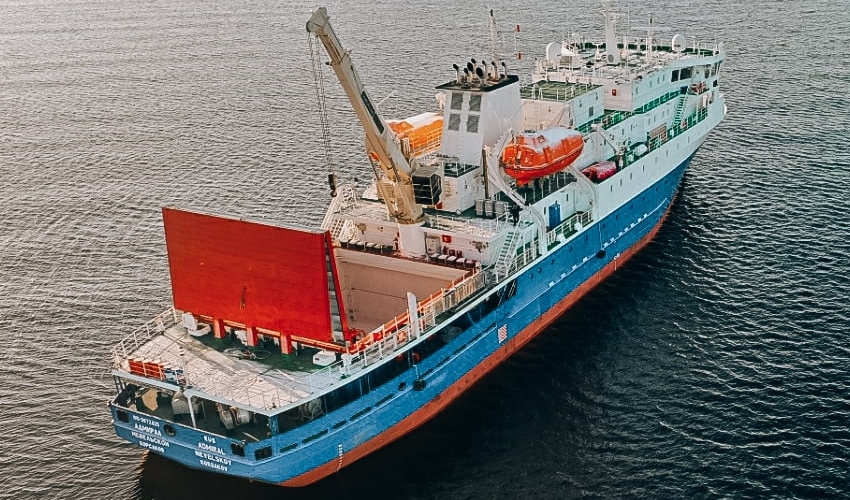
Decks and Cabins
The icebreaking ferry Pavel Leonov has 6 decks and a total of 38 passenger staterooms. Of these, 30 are double–quadruple cabins (including one accessible cabin designed for passengers with disabilities), 6 are 4-bed cabins, and 1 is a quad family cabin.
All cabins have en-suite bathrooms (shower, washbasin, WC). The cabins’ interior (furniture and windows) was supplied by the Russian company “Aris & Gesser.” Standard amenities include lower fixed beds (with drawers), upper folding bunk beds, bedside lamps, round non-opening porthole windows, LCD TV (satellite reception), refrigerator, wall-mounted writing table with chair, and wardrobe. One luxury cabin additionally has a 3-seater sofa.
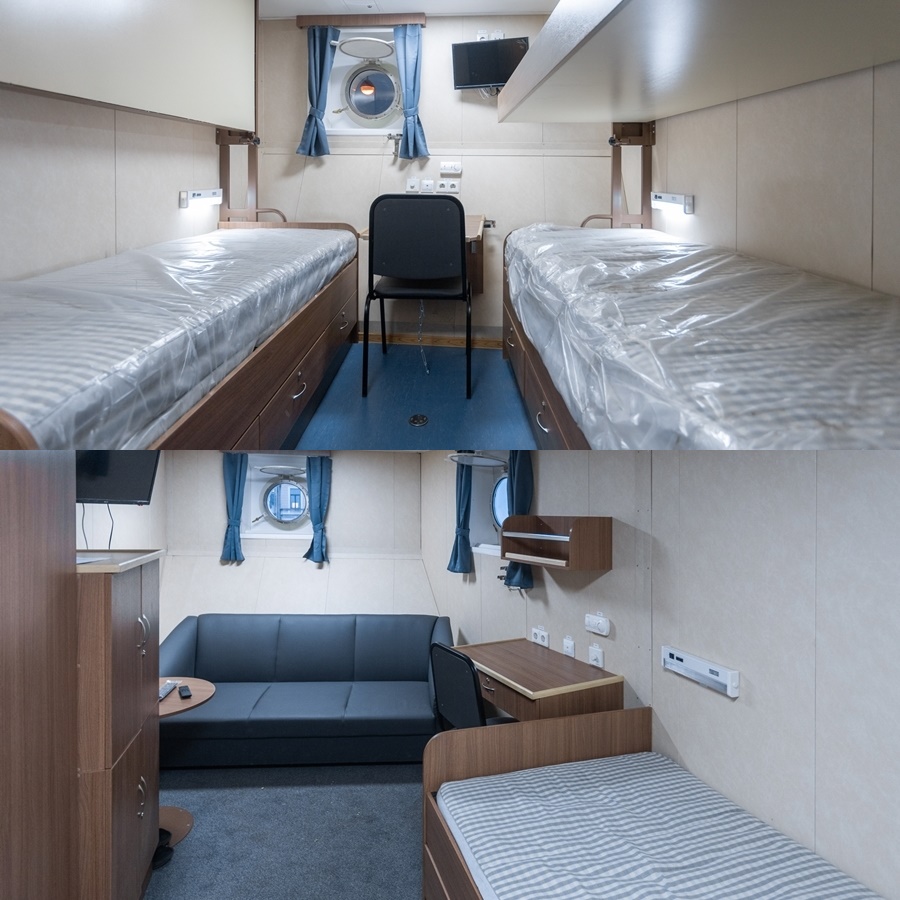
There are 24 crew cabins (accommodating 22–28 people), including 5 officer cabins (Captain, Chief Officer, Passenger Assistant Captain, Chief Engineer, SSC company’s representative), plus 9 double and 10 single cabins.
The Restaurant has 74 seats, with adjacent Galley/Kitchen and provisions storage rooms. There is a Bar Lounge (for passengers) and a separate Mess hall (crew-only dining room/lounge). She also has a small Gym Room (free weights, 1 Treadmill, 1 Bike Trainer), a Sauna Room (with an adjacent small plunge-pool room), a Laundry Room, and a Reception Desk and Office (in the Lobby area on Deck 3).
The Infirmary (ship’s hospital) consists of an outpatient clinic (with bathroom with tub and shower), an isolation ward (2-bed, with bathroom with bathtub and shower), a treatment room, and a doctor’s cabin (bed and sofa).
